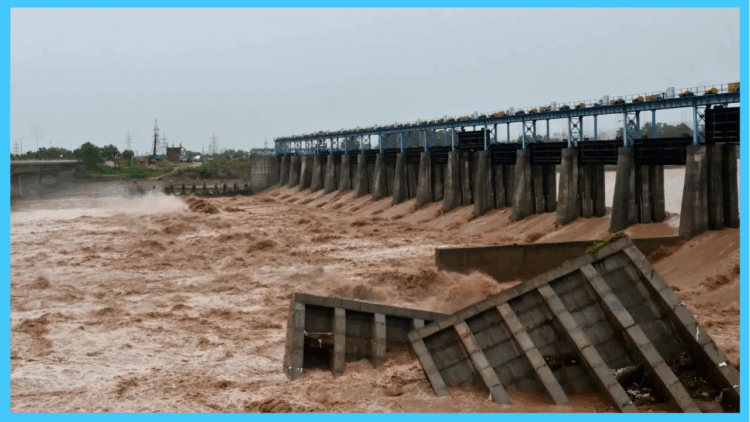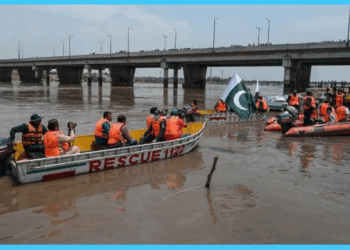ISLAMABAD; Heavy monsoon rains lashing the Himalayan region have triggered widespread devastation, killing at least 36 people in India over the past 24 hours and forcing authorities to open the spillways of major dams. This move has heightened flood threats in downstream Pakistan, where swollen rivers have already inundated vulnerable districts.
The deadliest incident occurred near the Hindu shrine of Vaishno Devi in Indian-occupied Jammu and Kashmir, where a massive landslide killed 33 pilgrims on Tuesday. Elsewhere in Doda district, rising waters claimed three more lives as rivers burst their banks and swamped low-lying areas. In Punjab state, about 200 schoolchildren were left stranded after floodwaters surrounded their school.
India’s Meteorological Department reported that Jammu received 612 mm of rainfall since August 23, the highest since 1950, and more than seven times the seasonal average. Severe rains also damaged highways and disrupted communications, leaving rescue efforts stretched.
The relentless downpour compelled Indian authorities to open several dams in Jammu and Kashmir. Officials in New Delhi confirmed that excess water had been released into the Ravi, Chenab, and Sutlej rivers, which flow downstream into Pakistan. Islamabad acknowledged receiving warnings from India and subsequently issued flood alerts.
In Pakistan, the release of Indian waters has compounded an already grim monsoon situation. Rescue officials confirmed that floodwaters engulfed the Kartarpur Sahib Gurdwara, a key Sikh religious site in Punjab. More than 167,000 people have been displaced in the province since mid-August, with over 40,000 evacuating voluntarily after early alerts.
Pakistan’s National Disaster Management Authority (NDMA) reports that the country’s flood death toll has risen to 804 since late June, with half of those fatalities recorded in August alone. Officials warn that the unprecedented surge in river levels poses continued risks to Punjab’s low-lying communities.
























